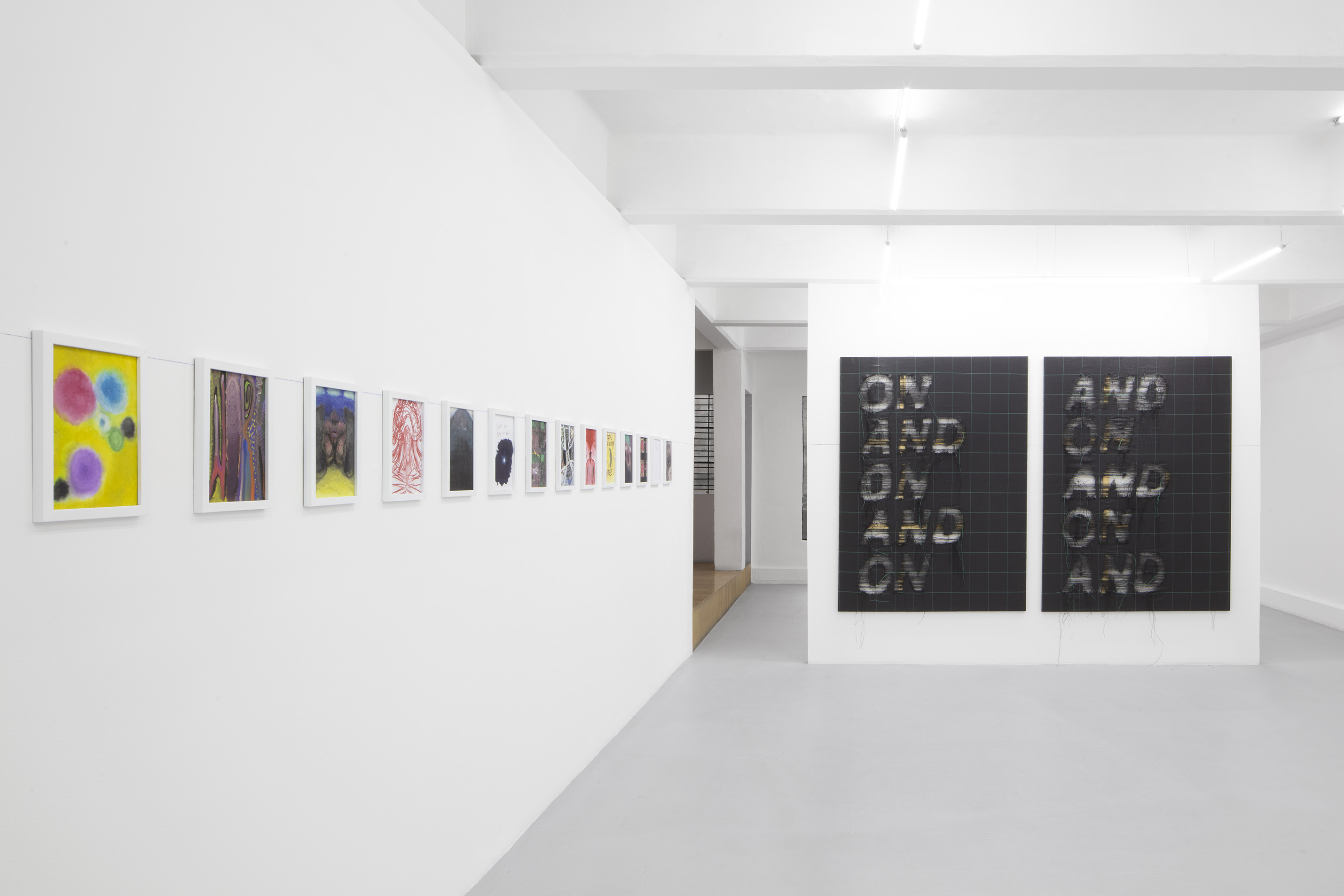
Review
The Spiral Dance: Andrew Birk at Galería Karen Huber
by Dorothée Dupuis
Reading time
5 min
But the very aspects of Witchcraft that seem threatening also hold out to men a new and vibrant spiritual possibility: that of wholeness, connection, and freedom. Men of courage find relationships with strong, powerful women exhilarating. They welcome the chance to know the Female within, to grow beyond their culturally imposed limitations and become whole.
— Starhawk, The Spiral Dance: A Rebirth of the Ancient Religion of the Great Goddess, 1979
My visit to Andrew Birk’s exhibition —at Galería Karen Huber this past June— stirred up a wave of emotions and reflections. I had only seen Andrew a few times since we both became parents, and always without our children. Seeing Andrew with his family at his exhibition, enjoying his erudite, stylistically diverse, and yet deeply personal art, gave me a feeling of security, enjoyment, and connection that is rarely experienced at an art opening. That mundane place, full of expectations and suspended in space/time, that place between places.
Full disclosure: I’ve known Andrew for years. He was one of the first people I was introduced to when I moved to Mexico. We’ve collaborated a few times, had many conversations, but I wouldn’t say we’re close. If there is a friendship, it’s one born of art —of producing from our whiteness in a Latin American context, sometimes together, but more often in proximity, as Trinh T. Minh-ha would put it. Still, I’ve watched Andrew grow as an artist, and I can say he’s one of the very few straight, white, cisgender male artists whose work genuinely interests me.
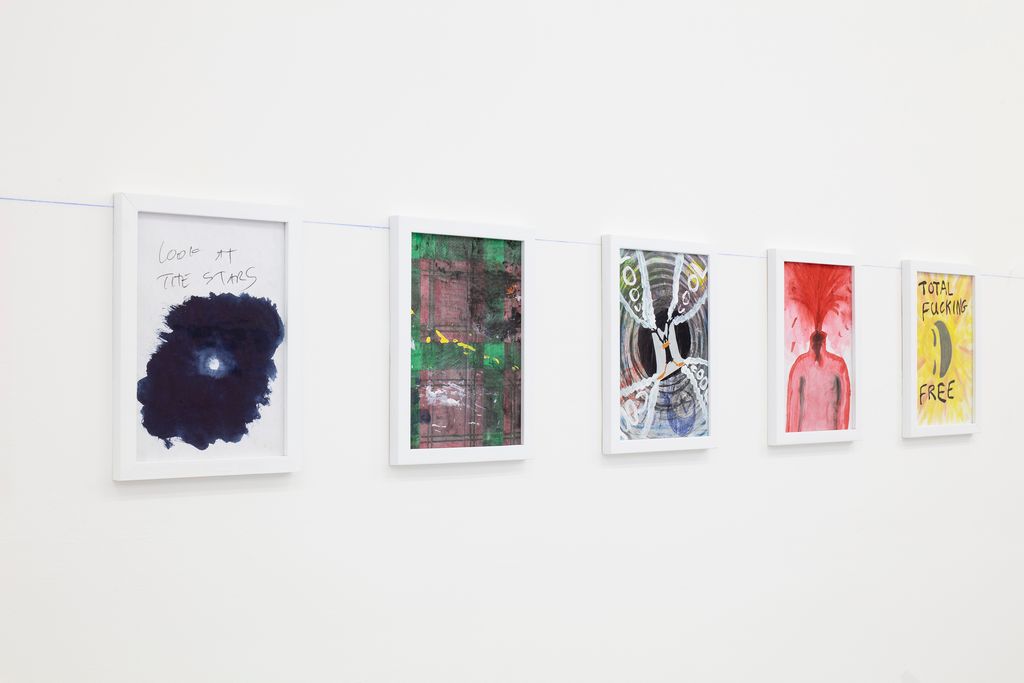
That might sound exclusionary. But as a critic and curator, I’m especially drawn to practices that weave a complex relationship with the artist’s own identity. I’m fascinated by how, today, artists have the opportunity to confront the monolith that has loomed for so long —the one we call Art History with a capital H— from within their own perspective. That confrontation often happens through grand gestures or quiet, humble acts. The monolith Andrew has chosen to challenge, in my view, is the most arrogant face of that history: the toxic masculinity of the painter, and more broadly, of the male artist.
Visiting the show, you can tell Andrew is a learned painter, deeply versed in twentieth-century Western art history and beyond. For example, the series On and on immediately evokes key painters from the late twentieth century, such as Christopher Wool and Glenn Ligon. His performative gestures —centered on his powerful body and captured in the video in the project room— recall the imposing and provocative presences of Chris Burden or Gordon Matta Clark. I vividly remember an earlier series in which a car dragged Andrew through mud while he clung half-naked to a canvas. He later stretched those canvases onto frames, producing almost Christlike imprints —like a dirty Yves Klein, not seeking redemption but exposing his sin again and again.
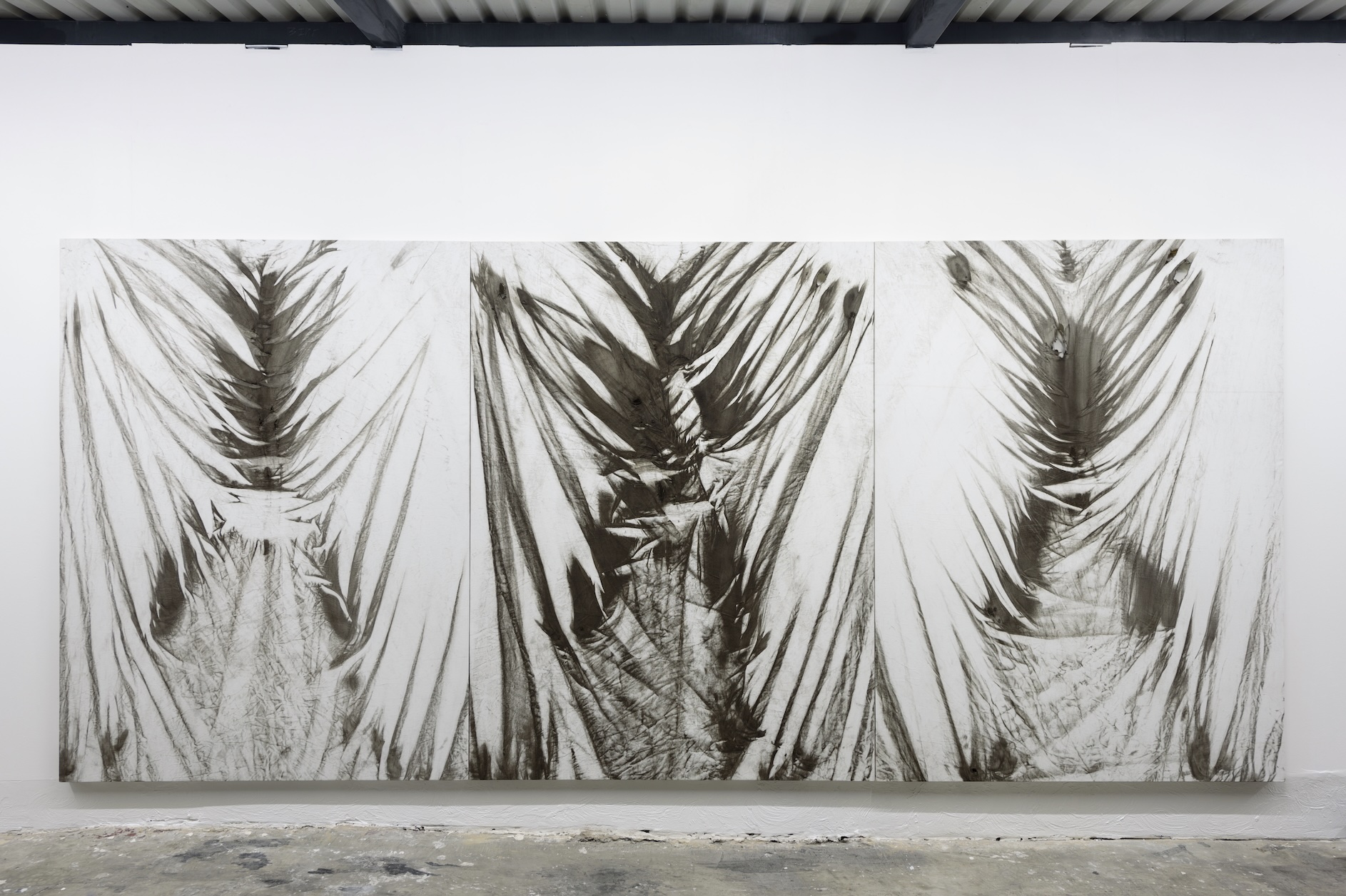
The spiral in Chaos Wall, the painting that closes the exhibition, is not exempt from this masculine violence —rendered here with both irony and tenderness. To create the motif, Birk used a chainsaw to cut into plastic sheeting typically used in permaculture farming —a gesture as brutal as it was delicate, putting several fingers at risk in the process. The sheet was then stretched on a frame. Birk finished the piece by attaching drawings made by his daughters to the spiral, forming a sort of childhood path reminiscent of the story of Thumbling.
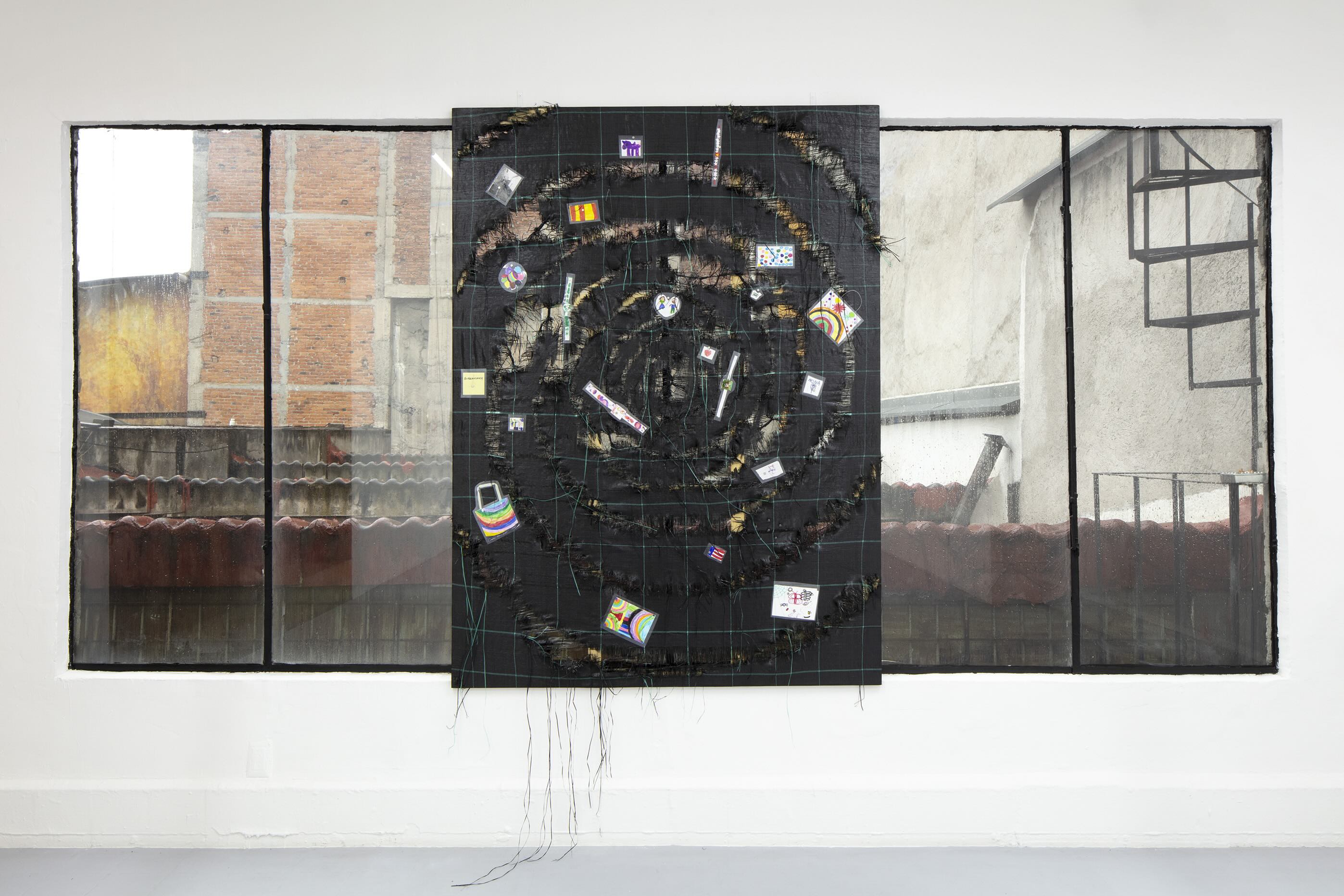
To me, this work is a metaphor for the artistic journey: a spiral with neither beginning nor end, driven by centrifugal and centripetal forces alike. It’s about noticing what happens on the edges of the main path, straying from it now and then, yet always returning —because life has its priorities. Andrew’s exhibition reminds us of this with a radical tenderness that, I believe, stems from his having tapped into deep, dreamlike forces while living in Mexico for many years as an urban American man —only to reconnect with them in a new and astonishing way in rural Catalonia, where he now lives with a strong woman and their two young daughters. They helped him bloom into his full capacity to commune with the Goddess and her creative power —beyond his own gender and origin.
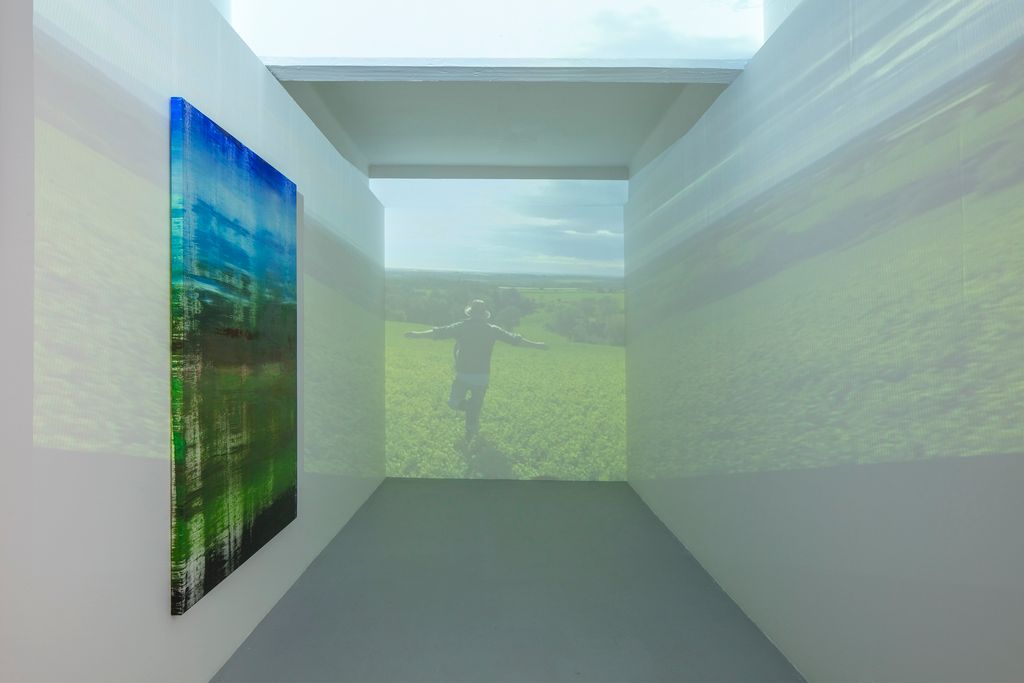
And so, it's no surprise that what now connects Andrew Birk’s work to contemporary art history are feminine references: from Vivian Suter to Ana Mendieta, from Cecilia Vicuña to Louise Bourgeois, from Koo Jeong A to Joan Mitchell. I’d like to return, then, to The Spiral Dance by Starhawk, and quote a passage I hope Andrew would appreciate:
In fact, there is no more God the Father. In the Craft, the cosmos is no longer modeled on external male control.The hierarchy is dissolved; the heavenly chain of command is broken; the divinely revealed texts are seen as poetry, not truth. Instead, a man must connect with the Goddess, who is immanent in the world, in nature, in woman, in his own feelings-in all that childhood religions taught him needed to be overcome, transcended, conquered, in order to be loved by God.
Because in the end, every painter dreams of transcendence through the act of painting, seen as demiurgic. And the lesson of Birk’s exhibition is this: it’s far better if that transcendence comes through the sacred feminine.
— Dorothée Dupuis
Translated to English by Luis Sokol
Published on July 13 2025